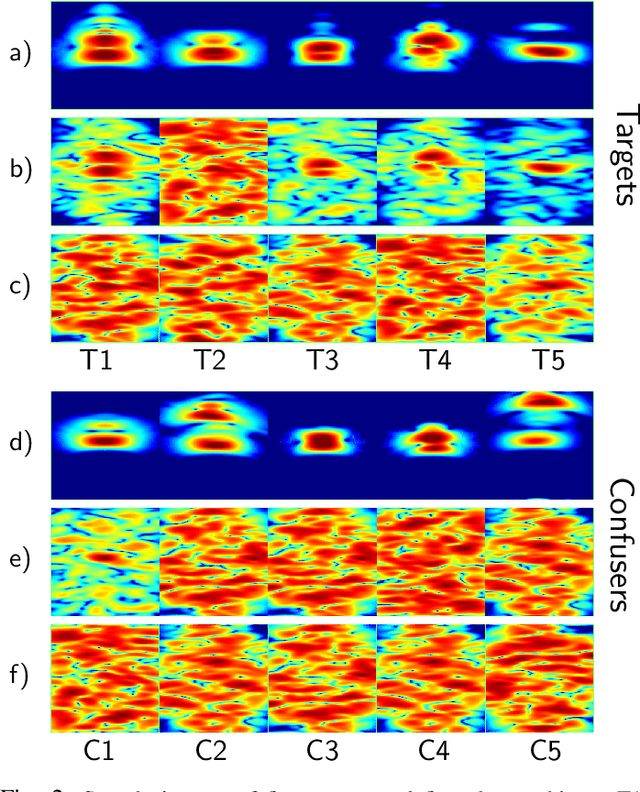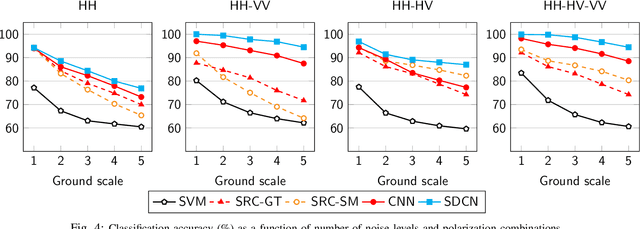Tiep Vu
Deep Network for Simultaneous Decomposition and Classification in UWB-SAR Imagery
Feb 22, 2018



Abstract:Classifying buried and obscured targets of interest from other natural and manmade clutter objects in the scene is an important problem for the U.S. Army. Targets of interest are often represented by signals captured using low-frequency (UHF to L-band) ultra-wideband (UWB) synthetic aperture radar (SAR) technology. This technology has been used in various applications, including ground penetration and sensing-through-the-wall. However, the technology still faces a significant issues regarding low-resolution SAR imagery in this particular frequency band, low radar cross sections (RCS), small objects compared to radar signal wavelengths, and heavy interference. The classification problem has been firstly, and partially, addressed by sparse representation-based classification (SRC) method which can extract noise from signals and exploit the cross-channel information. Despite providing potential results, SRC-related methods have drawbacks in representing nonlinear relations and dealing with larger training sets. In this paper, we propose a Simultaneous Decomposition and Classification Network (SDCN) to alleviate noise inferences and enhance classification accuracy. The network contains two jointly trained sub-networks: the decomposition sub-network handles denoising, while the classification sub-network discriminates targets from confusers. Experimental results show significant improvements over a network without decomposition and SRC-related methods.
Fast Low-rank Shared Dictionary Learning for Image Classification
Jul 16, 2017



Abstract:Despite the fact that different objects possess distinct class-specific features, they also usually share common patterns. This observation has been exploited partially in a recently proposed dictionary learning framework by separating the particularity and the commonality (COPAR). Inspired by this, we propose a novel method to explicitly and simultaneously learn a set of common patterns as well as class-specific features for classification with more intuitive constraints. Our dictionary learning framework is hence characterized by both a shared dictionary and particular (class-specific) dictionaries. For the shared dictionary, we enforce a low-rank constraint, i.e. claim that its spanning subspace should have low dimension and the coefficients corresponding to this dictionary should be similar. For the particular dictionaries, we impose on them the well-known constraints stated in the Fisher discrimination dictionary learning (FDDL). Further, we develop new fast and accurate algorithms to solve the subproblems in the learning step, accelerating its convergence. The said algorithms could also be applied to FDDL and its extensions. The efficiencies of these algorithms are theoretically and experimentally verified by comparing their complexities and running time with those of other well-known dictionary learning methods. Experimental results on widely used image datasets establish the advantages of our method over state-of-the-art dictionary learning methods.
 Add to Chrome
Add to Chrome Add to Firefox
Add to Firefox Add to Edge
Add to Edge